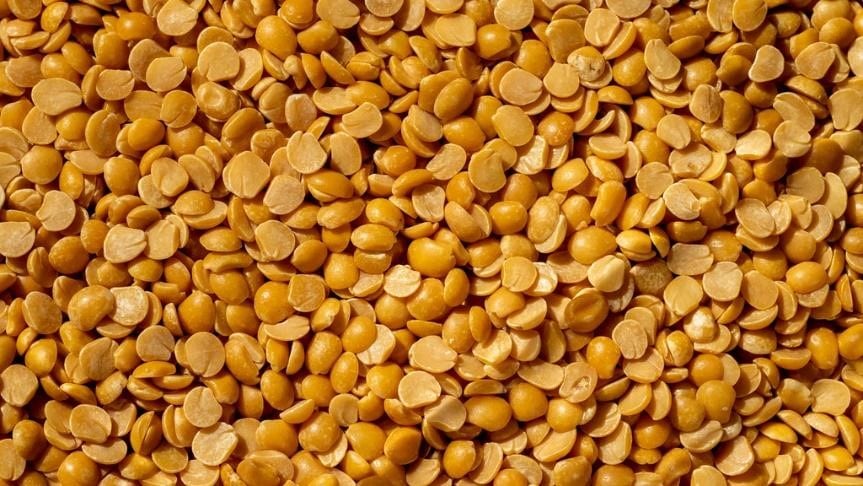“It is a dense source of nutrients and plays a promising role in human nutrition.”
First cultivated on the Indian subcontinent some 3,500 years ago, the pigeon pea is now a staple throughout much of Asia and Africa. It’s a key ingredient in Indian cuisine, especially dal, a favorite in vegan and vegetarian circles, and packed with protein and vitamin C. Some say it’s the perfect vegetable complement to rice and bread. This crop is also famously drought-resistant due to deep root systems and may even help other crops adapt to a changing climate.
New studies out of India—the world’s dominant producer—are unveiling the full suite of this crop’s nutritional benefits. Scientists are also discovering that the pigeon pea is climate-resilient in more ways than one. Is the pigeon pea a perfect weapon in the food security advocate’s arsenal? Possibly, but there’s a catch.
A 2018 review in the Asian Journal of Dairy and Food Research lays out in detail what science has learned of the pigeon pea’s health benefits in just the past decade (Role of pigeon pea (Cajanus cajan L.) in human nutrition and health: A review (arccjournals.com)). Nutritionists have long known that pigeon peas are rich in vitamin C and protein and thus a good option for diets lacking in meat, voluntarily or otherwise. But there’s much more. As Aruna Talari and Devindra Shakappa of India’s National Institute of Nutrition explain in an overview, more recent studies indicate high concentrations of amino acids, fatty acids, carbohydrates, and minerals as well. “Pigeon pea is a good source of minerals such as phosphorous, magnesium, iron, calcium, sulfur, and potassium, but low in sodium,” the authors wrote. Pigeon peas provide zinc and copper as well. More studies from India and beyond found pigeon peas to be useful as antioxidants. There’s also good evidence that pigeon peas may help prevent cancer. In human health terms, this humble crop seems to have it all. “It is a dense source of nutrients and plays a promising role in human nutrition,” Talari and Shakappa conclude.
A study published earlier this year shows how the pigeon pea’s nutritional promise can be put into practice. A team of agricultural scientists from Pune, Chennai, Amvrati, and New Delhi say they organized a “farming system for nutrition” outreach program to encourage rural Indian farm households to plant and eat crops they otherwise neglected (https://doi.org/10.1371/journal.pone.0248698). After three years they checked in to see now only how the families were doing financially and health-wise. The regions targeted were known for persistent malnutrition, with initial surveys showing “that the population in the study area was largely undernourished and that household diets were cereal-dominated,” Pradhan et al. explain. The initiative used a variety of crops, but the pigeon pea played a prominent role—despite the crop’s popularity in India the outreach team introduced pigeon peas to rural farmsteads that weren’t cultivating it. They say their interventions paid off. “Average intake of pigeon pea doubled,” they reported, and household nutrition improved in tandem.
So that takes care of nutrition. What about climate change?
As mentioned earlier, farmers and agricultural researchers have long known pigeon peas are drought-tolerant. This is of course important in itself. But new research unearthed convincing evidence that pigeon peas can help make other plants more drought-resistant as well. Indian and Swiss scientists tested finger millet plants experiencing induced drought conditions while intercropped with pigeon peas. They hypothesized that the deeper penetrating roots of pigeon peas would have a “bio-irrigation” effect, meaning the roots would draw water further up the soil column and make it available for the shallower-rooted finger millet. And that’s what happened, according to the researchers. “Pigeon pea can indeed promote the water relations of finger millet during a drought event,” reported Singh et al., describing how the finger millet plants planted with pigeon peas showed less root wilting in dry conditions compared to those grown in monoculture (https://doi.org/10.1371/journal.pone.0228993).
“Pigeon pea can indeed promote the water relations of finger millet during a drought event.”
Case closed? Not so fast.
Though pigeon pea seems to improve the performance of finger millet during droughts, Singh et al. caution that their study uncovered the exact opposite effect in conditions of normal or abundant moisture—pigeon peas outcompeted finger millet for water under non-drought conditions, inhibiting its growth. This could be because the plants were spaced too closely together in the lab. Whether or not the experiment was representative of smallholder farmer conditions, the authors warn that their results suggest pigeon peas may harm other species during normal climate conditions depending on how intercropping is practiced. This is the “catch” alluded to earlier, but it\’s not necessarily an insurmountable one.
Some relatively simple field trials of intercropping, the kind of low-cost, high-impact research Grow Further is looking to support, could help ensure that pigeon peas are a win for climate adaptation as well as nutrition.
— Grow Further
Photo credit: Ajay Suresh and Creative Commons.




